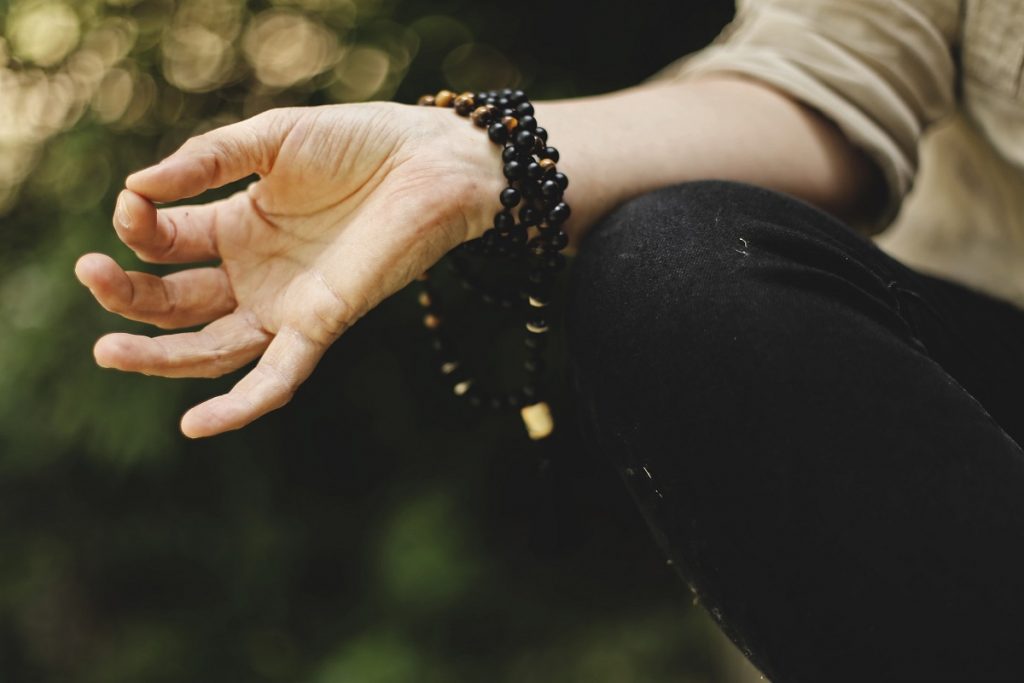- Adhas = down
- Mukha = face
- Svana = dog
- asana = posture
The downward-facing dog pose is one of the most widely known exercises or yoga poses around the world. It is also a part of Surya Namaskar, Salute to the Sun.
Conventionally, this asana is expected to stimulate a number of chakras, including the Manipura and Ajna chakras.
Activating the Manipura chakra through Adho Mukha Svanasana is thought to eliminate fear and insecurity, while the Ajna chakra stimulates perception and inspiration.
By reversing gravitational action, Adho Mukha Svanasana gets blood and body fluids flowing in the opposite direction since it is an inverted pose.
The inversion is also thought to provide a different perspective on an emotional level, improve in confidence level.
Calming the brain, relieving stress and depression, preventing osteoporosis are some of the main benefits of performing this asana.
URDHVA MUKHA SVANASANA

- Urdhva = upward
- Mukha = face
- Svana = dog
- Asana = posture
This posture is one of those introduced by Krishnamacharya in the 20th century.
Urdhva Mukha Svanasana is one of the most effectual yoga poses accountable for building strength, awakening the upper body, preparing the body for intense backbends and keeps your overall body better and healthy or well-being.
It also coincides with Bhujangasana (cobra pose), the distinction being that in the latter pose, the lower body remains pressed into the ground, while in the former, only the tops of the feet touch the floor.
These two asanas are simple backbends and are performed during Surya Namaskar.
Traditionally, Urdhva Mukha Svanasana is believed to stimulate the Anahata chakra, opening the body to compassion, affection, and gratitude.
The energy from this chakra also creates a greater connection with the global community.
The upward-facing dog pose strengthens the back, arms, and wrists, stimulates the abdominal organs and helps relieve depression.
BALASANA

- Bala = child
- Asana = posture
Balasana or the child’s pose is a relaxing pose that can be inserted in between other difficult poses as a recovery pose.
Balasana is named so because the performer assumes the fetal position of a baby before childbirth.
Many scriptures even say that one may be able to connect to their memories inside the womb.
While the West believe bowing one’s head signals surrender, it is considered a noble act of humility in India.
Balasana activates the Ajna, Swadisthana and Muladhara chakras.
An important benefit of performing Balasana is that it cures restless leg syndrome.
While performing Balasana, the spine remains relaxed in forward-fold hence one can focus on breathing and concentrating on the chest and abdomen towards the tummy.
Balasana can be utilized to treat severe back pain, insomnia and to minimize stress and improve in sleep.
VIRABHADRASANA

- Vira = hero
- Bhadra = friend
- Asana = posture
Arguably the asana with the heaviest mythological story, Virabhadrasana or warrior’s pose is a trio of lunging stretches memorializing the exploits of the great warrior Virabhadrasana.
Yogis are non-violent people, a fact that would create a stir to why a yoga pose would be named after a warrior.
The answer to that being, Virabhadrasana is a spiritual warrior who fights the evil of avaidya (self-ignorance) which is the ultimate cause of all our sufferings.
According to Indian mythology, Virabhadrasana is an incarnation of Shiva himself created to destroy Daksha, the son of Brahma.
Daksha was unsupportive of the marriage of Shiva and Sati, his daughter, due to which he cut her off from the family.
Sati, seeking the validation of her father, ends up walking on fire and killing herself.
Virabhadrasana is created by Shiva to seek revenge.
- Virabhadrasana I, signals the arrival of Virabhadra with a sword in both hands, both hands extended above the head.
- Virabhadrasana II is the sighting of the enemy (Daksha).
- Virabhadrasana III is the slaying of the enemy (Daksha) with the swift and precise movement of the sword.
VIPARITA VIRABHADRASANA

- Viparita = inverted
- Vira = hero
- Bhadra = friend
- asana = posture
An extension of the Virabhadra II pose, it can be entered by arching the back and the backhand reaching the corresponding leg and the forehand pointing up to the sky.
This pose is a modern adaptation of Virabhadrasana II, which could’ve been created as early as 2000.
The general perception of a warrior is that of violence and warfare.
The power of the reverse warrior pose is to turn around this symbolism and to think noble of warrior ship.
This idea of a peaceful warrior is shown to students to teach them that love and compassion are just as important.
This pose is supposed to balance 3 chakras Muladhara, Manipura, and Ajna.
Some benefits of yoga and meditation can be completely surprising where you can get rid of addiction and mental illness without any kind of medication and the daily practice of this pose can energizing our body, building perseverance, and improves our focus.
Setu Bandha Sarvangasana

- Setu = bridge
- Bandha = lock
- Sarva = all
- asana = posture
A bridge is something that connects two places be it physically, virtually or psychologically.
It renders the opportunity to cross over from one place to another.
By creating a bridge with the body one can create a path between the place one is in, and the place one wants to be in, hence inviting transformation.
Bridge pose also stimulates the Muladhara (root), Visuddha (throat) and Anahata (heart) chakras.
It is believed that the root chakra helps one stay connected; the throat chakra enhances one’s communication and eloquence; and the heart chakra encourages kindness, compassion, and healing.
The bridge pose gets rid of anxiety, relaxes the mind, relieves negative emotions and helps a great deal in improving mental health.




